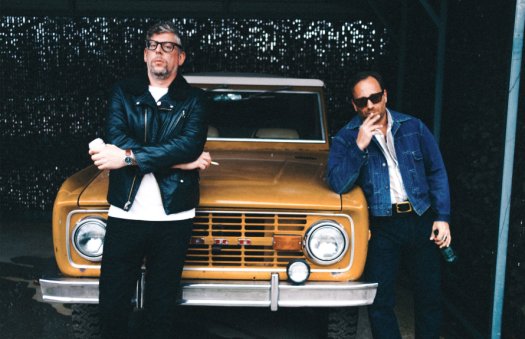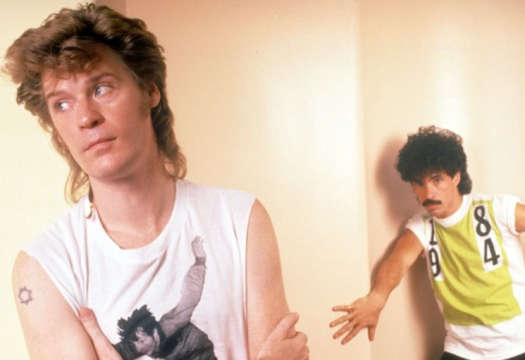Matthew Herbert recently performed his boundary-pushing One Pig project at electronic festivals MUTEK and Sonar, held in Montreal and Barcelona, respectively. Performing the work in a live band context with no programming or click tracks, the band improvised freely incorporating performance aspects into the work, including renowned Canadian chef Martin Juneau cooking up some pork onstage for the piece's finale.
"It's taken 20 years to get to the point where you can play electronic music as a band," says Herbert in a recent interview with Exclaim! "Rather than a DJ with some musicians over the top. You couldn't have done it even five or six years ago — the technology wasn't there."
One piece of technology Herbert is referring to is the StyHarp – a tactile sample-triggering device designed to look like a pig sty that was built using motion sensors from a hacked Gametrak golf simulation game by band member Yann Seznec. "Meeting him was something that changed things for me because then we can just create stuff to do what we want to do rather than try to use existing technologies."
This technology, in a slightly altered form, was also used to create Matthew Herbert's latest album, the newly released The End of Silence, which is based on a five-second audio clip recorded by war photographer Sebastian Meyer.
"I wanted to make a record out of one noise just because the technology's got to such a point that you can do that. Regardless of whether the music's any good or not, I think that the range of textures you can now get is pretty extraordinary from the manipulation of sound sources."
Meyer was in Libya taking photographs, documenting what was going on there during the revolution.
"He was with some rebel fighters at a town called Ra's Lanuf, which is almost like a meeting point for the rebels and out of nowhere a plane came and dropped a bomb. He can't really listen to the record because at the time he thought he was gonna die."
An instrumental work in three parts, the album takes Meyer's audio clip and extends it into an album-length work using similar techniques to One Pig. Rather than being didactic or preaching a specific message, the album is more about getting us to pay attention to sound, says Herbert.
"I think we have a very lazy attitude towards sound. Naturally I think we're very good at processing sounds, but as recorded sound is such a new form, we're really not used to processing it properly at all.
"A lot of the time we expect everything to be laid out on a plate for us. And it's partly because of the Internet and this illusion of information. For me, that's why sound has such a power to it because it can collapse and invert that relationship to the point where you can suddenly find yourself confronted almost face-first with the unimaginable and impossible."
For the past 25 years Herbert has had to go out and hustle a bit to try to realize projects, but lately he has been approached to work on some bigger undertakings. Herbert says he feels very lucky to have the time to develop different works.
"I've been invited to do something at the Royal Opera House so I'm developing an opera for them called The Crackle, which is opening spring next year," he says. And this July sees the debut of The Hush, his first audiovisual theatre piece, made for the National Theatre on London's South Bank.
In the meantime, The End of Silence is out now on Accidental.
"It's taken 20 years to get to the point where you can play electronic music as a band," says Herbert in a recent interview with Exclaim! "Rather than a DJ with some musicians over the top. You couldn't have done it even five or six years ago — the technology wasn't there."
One piece of technology Herbert is referring to is the StyHarp – a tactile sample-triggering device designed to look like a pig sty that was built using motion sensors from a hacked Gametrak golf simulation game by band member Yann Seznec. "Meeting him was something that changed things for me because then we can just create stuff to do what we want to do rather than try to use existing technologies."
This technology, in a slightly altered form, was also used to create Matthew Herbert's latest album, the newly released The End of Silence, which is based on a five-second audio clip recorded by war photographer Sebastian Meyer.
"I wanted to make a record out of one noise just because the technology's got to such a point that you can do that. Regardless of whether the music's any good or not, I think that the range of textures you can now get is pretty extraordinary from the manipulation of sound sources."
Meyer was in Libya taking photographs, documenting what was going on there during the revolution.
"He was with some rebel fighters at a town called Ra's Lanuf, which is almost like a meeting point for the rebels and out of nowhere a plane came and dropped a bomb. He can't really listen to the record because at the time he thought he was gonna die."
An instrumental work in three parts, the album takes Meyer's audio clip and extends it into an album-length work using similar techniques to One Pig. Rather than being didactic or preaching a specific message, the album is more about getting us to pay attention to sound, says Herbert.
"I think we have a very lazy attitude towards sound. Naturally I think we're very good at processing sounds, but as recorded sound is such a new form, we're really not used to processing it properly at all.
"A lot of the time we expect everything to be laid out on a plate for us. And it's partly because of the Internet and this illusion of information. For me, that's why sound has such a power to it because it can collapse and invert that relationship to the point where you can suddenly find yourself confronted almost face-first with the unimaginable and impossible."
For the past 25 years Herbert has had to go out and hustle a bit to try to realize projects, but lately he has been approached to work on some bigger undertakings. Herbert says he feels very lucky to have the time to develop different works.
"I've been invited to do something at the Royal Opera House so I'm developing an opera for them called The Crackle, which is opening spring next year," he says. And this July sees the debut of The Hush, his first audiovisual theatre piece, made for the National Theatre on London's South Bank.
In the meantime, The End of Silence is out now on Accidental.




